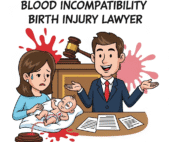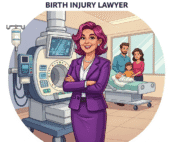Introduction
Cerebral palsy cooling therapy is a significant advancement in neonatal medicine, particularly for infants who have suffered from oxygen deprivation during or shortly after birth. This condition, often referred to as birth asphyxia, can lead to a range of neurological impairments, with cerebral palsy being one of the most severe and long-lasting. Cooling therapy, also known as therapeutic hypothermia, aims to mitigate this damage in the earliest, most critical stages of a newborn’s life. In this comprehensive guide, we’ll explore what cooling therapy involves, how it helps prevent cerebral palsy, its benefits, limitations, and what steps to take if your child was not provided this potentially life-changing treatment.
What Is Cerebral Palsy Cooling Therapy?
Cerebral palsy cooling therapy, clinically known as therapeutic hypothermia, is a treatment where a newborn’s body temperature is carefully lowered to approximately 33.5°C (92.3°F) for a period of around 72 hours. The purpose of this controlled cooling is to slow down the body’s metabolic rate, especially within the brain, to prevent or minimize the extent of neurological damage.
This therapy is typically administered to newborns who show signs of hypoxic-ischemic encephalopathy (HIE), a condition that arises when the brain doesn’t receive enough oxygen or blood. Since HIE is a leading cause of cerebral palsy, early intervention with cooling therapy can significantly impact a child’s future motor and cognitive abilities.
When Is Cooling Therapy Used?
Cooling therapy must be administered quickly, usually within six hours after birth, to be effective. This urgency is due to the narrow therapeutic window in which brain cells can still be protected from irreversible damage.
Medical teams typically consider cooling therapy when a newborn displays signs such as low Apgar scores, seizures, abnormal muscle tone, breathing difficulties, or results from imaging that indicate brain trauma. Full-term or near-term babies (usually 36 weeks or older) are most eligible for this treatment, as premature infants may respond differently or present additional risks.
Delays in recognizing these signs or failing to administer cooling therapy when indicated may result in missed opportunities for intervention, and in some cases, may even point to medical negligence.
How Effective Is Cooling Therapy for Cerebral Palsy Prevention
Clinical studies and long-term research have demonstrated that therapeutic hypothermia can reduce the severity of brain injuries in newborns diagnosed with HIE. Although it doesn’t guarantee prevention of cerebral palsy, it does improve the likelihood of a better outcome and can lessen the extent of motor, cognitive, and behavioral challenges a child may face.
Cooling therapy has been shown to significantly lower the risk of death and severe disability in full-term infants. By limiting secondary brain injury, it protects neurons during a vulnerable time. In addition, children who receive cooling therapy may require fewer intensive interventions later and show improved developmental scores in early childhood assessments.
Risks and Limitations of Cooling Therapy
While cerebral palsy cooling therapy is widely regarded as safe and effective, it is not entirely without risk. Potential complications may include slower heart rate, low blood pressure, increased risk of bleeding, and potential for infection due to the suppression of metabolic activity. These side effects are typically manageable in a neonatal intensive care unit (NICU) under close medical supervision.
Additionally, the therapy is not suitable for all infants. Extremely premature babies or those with other serious congenital conditions may not qualify for cooling therapy. Timing is another limitation—once the six-hour post-birth window has passed, the effectiveness of the treatment diminishes significantly.
What to Do if Your Child Was Not Given Cooling Therapy?
If your child suffered from oxygen deprivation at birth and was not offered cerebral palsy cooling therapy, it’s essential to investigate the circumstances. In some cases, failure to diagnose HIE or administer timely treatment could be a result of medical negligence. Understanding your rights in such a situation can be critical—not only for seeking justice but also for securing resources to support your child’s lifelong needs.
You may be entitled to pursue a birth injury claim which can provide compensation for medical care, therapy, adaptive equipment, and more. It’s important to speak with a legal expert experienced in cerebral palsy and birth injury cases.
Every child with Cerebral Palsy deserves a future full of possibilities. If you have questions, need guidance, or simply want to talk — we’re here for you. Contact us today.
Life After Cooling Therapy: Ongoing Cerebral Palsy Management
Even when cooling therapy is successfully administered, some children may still develop symptoms of cerebral palsy or related neurodevelopmental challenges. For these children, early intervention remains vital. Treatments may include physical therapy, speech therapy, occupational therapy, and behavioral interventions. The earlier these services begin, the better the outcomes for long-term mobility, independence, and communication.
Parents and caregivers should also stay informed about educational accommodations, support groups, and financial assistance programs available to families affected by cerebral palsy.
What is the goal of cerebral palsy cooling therapy?
The main objective is to slow down the baby’s brain activity to prevent further damage from lack of oxygen, reducing the risk or severity of cerebral palsy.
When should cooling therapy be administered?
Cooling therapy must begin within six hours after birth to be effective. Beyond this window, the chances of successful intervention significantly decrease.
Does cooling therapy completely prevent cerebral palsy?
While it can reduce the severity of brain injury, it doesn’t guarantee that cerebral palsy will not develop. It significantly improves long-term outcomes in many cases.
Is cerebral palsy cooling therapy safe for all infants?
No, it is generally used for full-term or near-term infants with signs of HIE. Premature babies or those with certain conditions may not be eligible.
Schedule Your Free Legal Consultation
If your child was diagnosed with cerebral palsy and you suspect they were not given cooling therapy when needed, you may have legal options. Our experts can help you evaluate your case and guide you through the process of seeking justice and compensation.
👉 Fill out our Free Consultation Form today to speak with a knowledgeable legal professional. Don’t wait—your child’s future deserves advocacy.




